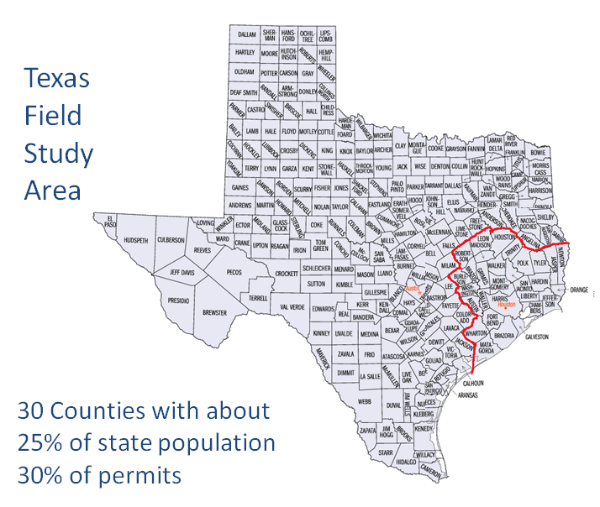Texas is one of eight states funded by DOE to conduct Single Family Field Studies. For the Texas study, SPEER collaborated with the Texas State Energy Conservation Office, SECO and the National Association of State Energy Officials, NASEO.
The goals of these studies were to:


Because Texas is such a large state, we decided to collect data in 30 counties in southeast Texas. An analysis of building codes and the high prevalence of large production builders in Texas gives us confidence that construction practices in this area are representative of the state except for the differences between climate zones.
Study Timeline:
Phase 1 of the Field Study was the initial data collection phase. Field teams gathered data on energy efficiency measures in about 140 new single family homes under construction in 2015. This data was analyzed and five high potential energy savings measures were identified.
In Phase 2, Outreach and Education, SPEER conducted an intensive education and training effort targeting code officials, builders and contractors. The goal of the training was to build a common understanding of the energy code among all stakeholders with a special focus on the high potential savings measures.
Phase 3 repeated the data collection effort following the same protocols as Phase 1 but on homes under construction in 2018. The 2018 data was then analyzed and compared to the Phase 1 data.
High level findings:
The field components of the study are complete, the Phase 1 initial state report was completed in 2017 and the final project report is expected in be finished in 2019. For more information on the Texas study and links to additional field studies visit our Field Study Results.
Curious about more information on SPEER Training? Visit our Training and Resources.
This website uses cookies.